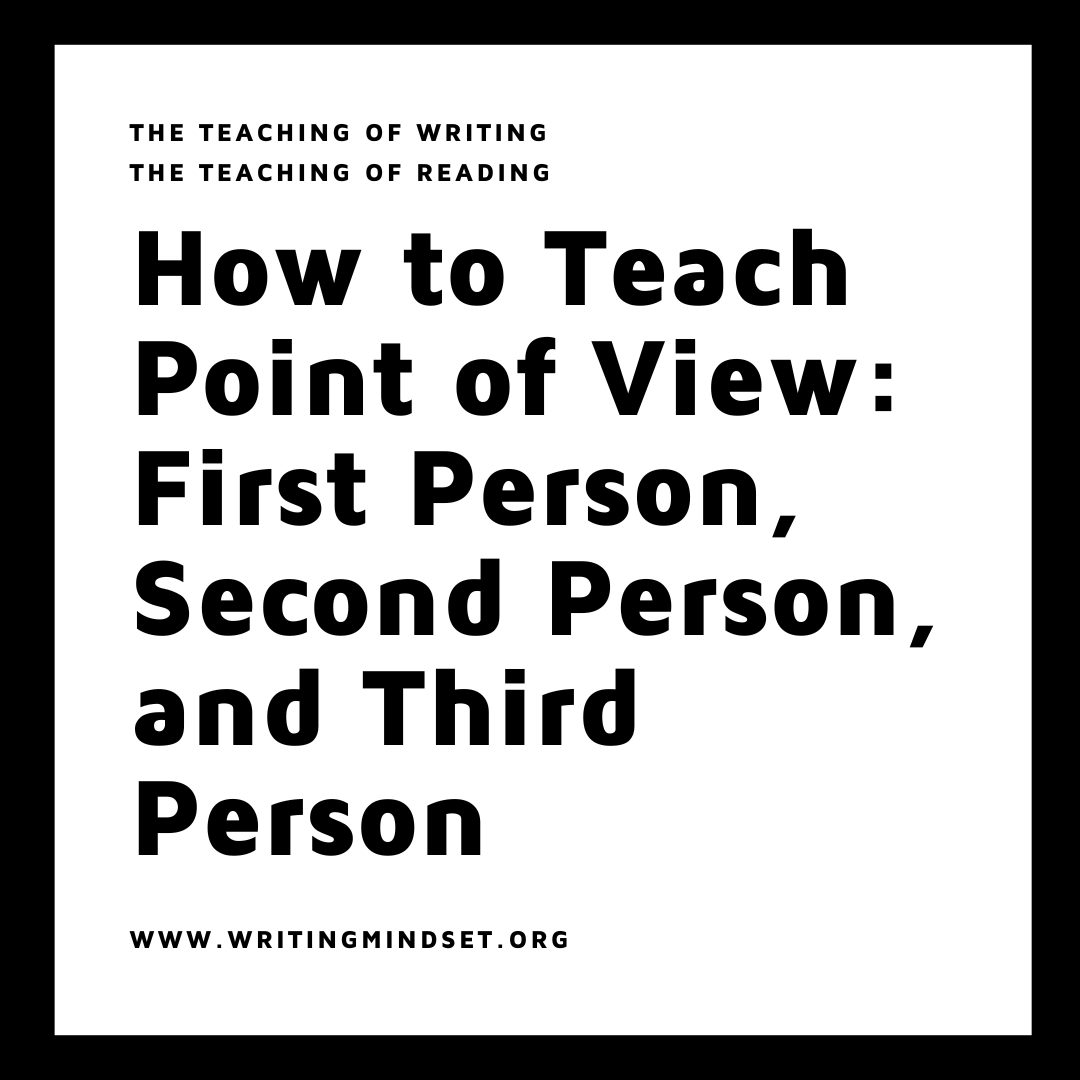How to Teach Point of View: First Person, Second Person, and Third Person
Teach the Power of Voice in Any Story
Teaching perspective and point of view when it comes to reading analysis is often the first step in a more advanced interpretation of any story. It is one of the capstone lessons that take place in middle school, and it is almost always found in canned curriculum guides that are used by larger districts. Traditionally, teachers focus on the first person, second person, and third person. Then, within third person- third person omniscient and third person limited. Narrative reliability often happens in 8th grade and beyond. This post is about how to do a brief introduction to the basic concepts of first person, second person, and third person.
As a reminder, here are quick definitions of each of the points of view:
First Person- the speaker or whoever is telling the story is speaking
Second Person- focuses on the listener of the story, think of this like a tour guide (On your left, you will see…)
Third Person- a voice outside of the speaker and the listener is telling the story
Third Person Limited- the voice doesn’t have all of the information, the individual scenes of a story are told with just that scene’s information
Third Person Omniscient- the voice is all-knowing, it knows all events, feelings, back stories, and what is going to happen
Pronouns, Pronouns, Pronouns
This was my go-to handout from Austen Peay State University (Clarksville, TN) Writing Lab because of its layout and simplicity in design. When first introducing the idea of perspective in any type of reading, students are often taught to recognize pronouns as the hint as to who is doing the talking or narration.
First Person
I, we, me, us, my, mine, our, ours
Second Person
you, your, yours
Third Person
he, she, they, it, him, her, them, his, her, hers, their, theirs, its
Teaching Tips
First Person:
Discuss the advantages and limitations of the first-person perspective.
Encourage students to explore their own experiences and emotions to develop authentic first-person narratives.
Focus on using descriptive language and vivid sensory details to immerse the reader in the narrator's perspective.
Second Person:
Explain the distinctiveness of the second person perspective and its purpose in different genres, such as choose-your-own-adventure stories or instructional guides.
Encourage students to experiment with different tones and voices to create an immersive and engaging experience for the reader.
Emphasize the importance of clear and concise instructions or descriptions when using the second person perspective.
Third Person:
Introduce the concept of the omniscient narrator versus a limited or selective third person perspective.
Guide students in developing well-rounded characters and maintaining consistency in their narration.
Encourage the use of vivid descriptions, dialogue, and character development to engage the reader emotionally.
Use Mentor Texts to Show Consistency
All writing guides and books about teaching writing will tell you that the goal is to maintain the same voice or perspective throughout the story or the piece of writing. This often rings true even when you engage with books that have alternate points of view or even alternate usage of points of view. The chapter or designated page grouping will maintain that consistent point of view for the duration of the excerpt. Even most chapter books and novels that rotate the perspective of characters will maintain the same point of view throughout their own turn.
Picture Books for Teaching Perspective:
Middle-Grade Chapter Books for Teaching Perspective:
Young Adult Chapter Books for Teaching Perspective:
Some Basic Rules (That Are Often Broken) in Writing
FIRST-PERSON IS USED FOR NARRATIVE ASSIGNMENTS ONLY
THIRD-PERSON IS USED FOR MORE FORMAL PAPERS OR RESEARCH PROJECTS
SECOND-PERSON IS OFTEN DISCOURAGED BECAUSE IT SOUNDS LIKE A “TOUR GUIDE”
FIRST-PERSON IS OFTEN SEEN AS WEAKER AND NOT AS COMPELLING AS THIRD-PERSON
Example Introduction Exercise #1: “Ornie the Pig” Video
Videos are often an easy way to introduce the points of view for the first time to elementary and middle school-aged students. This video “Ornie the Pig” is a fun video about a pig who really wants a cookie. The way to set up this lesson is to watch the video one time through to get the giggles out and focus on what happened in the story. Then, assign different points of view for the students to understand. They can retell from different perspectives in the video.
Story #1 FIRST-PERSON: Write as if you were the pig
Story #2 SECOND PERSON: Write as if you were the cookie talking to the pig
Story #3: THIRD PERSON: Write as if you were a person outside the story saying what is going on
Example Introduction Exercise #2: “The Present” Video
Like “Ornie the Pig,” you can use another great video (that also fosters empathy) called “The Present.” Follow the same setup for the lesson. I would play it one time to get the initial reactions out, and then play it again with purpose.
Show clip: "The Present”
Story #1 FIRST-PERSON: Write as if you were the dog
Story #2 SECOND PERSON: Write as if you were the mom talking to the son
Story #3: THIRD PERSON: Write as if you were a person outside the story saying what is going on













